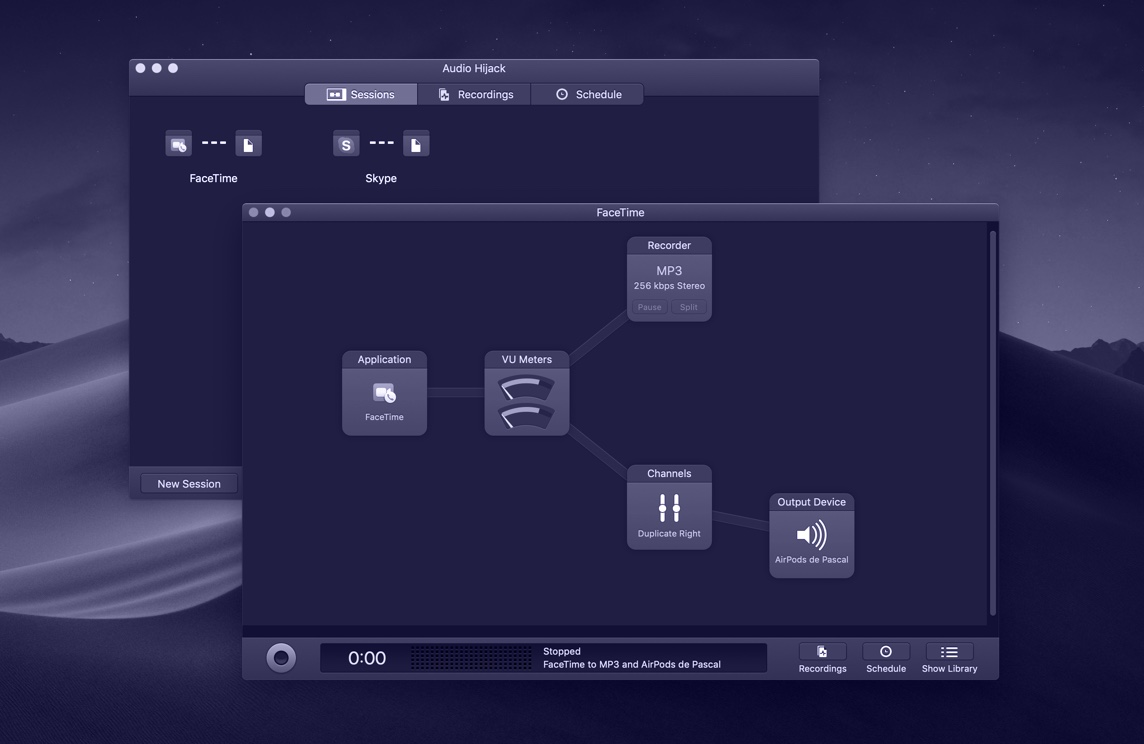How to Record Buyer Interviews
In this thread on Roadmap.com about organizing customer interviews results, the subject of recording interviews comes up.
So here’s the recording setup I use on the Mac:
My Recording Setup: Audio Hijack and FaceTime
Audio Hijack Pro is the tool that does the recording.

It allows me to record audio coming from apps like Skype or FaceTime. The audio comes in clear, and the recording is saved in an .mp3 file.
When I’m taking notes, I can jot down the recording time that I heard something important I’ll want to come back to.
Recording with FaceTime is handy since I can route the call from my phone through my Mac so Audio Hijack can pick it up. To do that, I just dial the phone number from within FaceTime on the Mac, and it’ll dial it through my phone. If the other person is setup with FaceTime too, the call quality is usually much better than a regular phone call.
Recordings That Will Be Listened To
There’s nothing fancy about the way I organize and sharing the recordings. I take notes on loose paper that I scan and keep around with my recording.
But to make sure the interview results get noticed by the rest of the team, it does help that the interview technique produces discoveries that matter.
Choosing questions that get the buyer to recall the purchase story, for instance, gives better results than asking the buyer to give opinions and preferences.
Asking the buyer about their purchase story has the added benefit that you can distill the interview’s insights into “when” statements. Here’s a when statement: When I struggle to take notes from customer interviews, I look for a recording app so I can have a recording for the rest of the team to listen to.
After a few calls, you discover the jobs for which the product was hired, helping you get a confident idea of what to build and what not to build when evolving your product.
Patterns like these take a few interviews to collect, and after hearing similar purchase stories, they become evident. Keeping the interviews around becomes helpful if someone on your team would like to hear the full story behind an anecdote you shared to them.
And if one of your interviews ends up strikingly good, like this story of what drove someone to buy a $450 pair of winter boots, a full write up of the story would be an even better interview artifact to share.
Stay Sharp!
—
Pascal Laliberté
@pascallaliberte